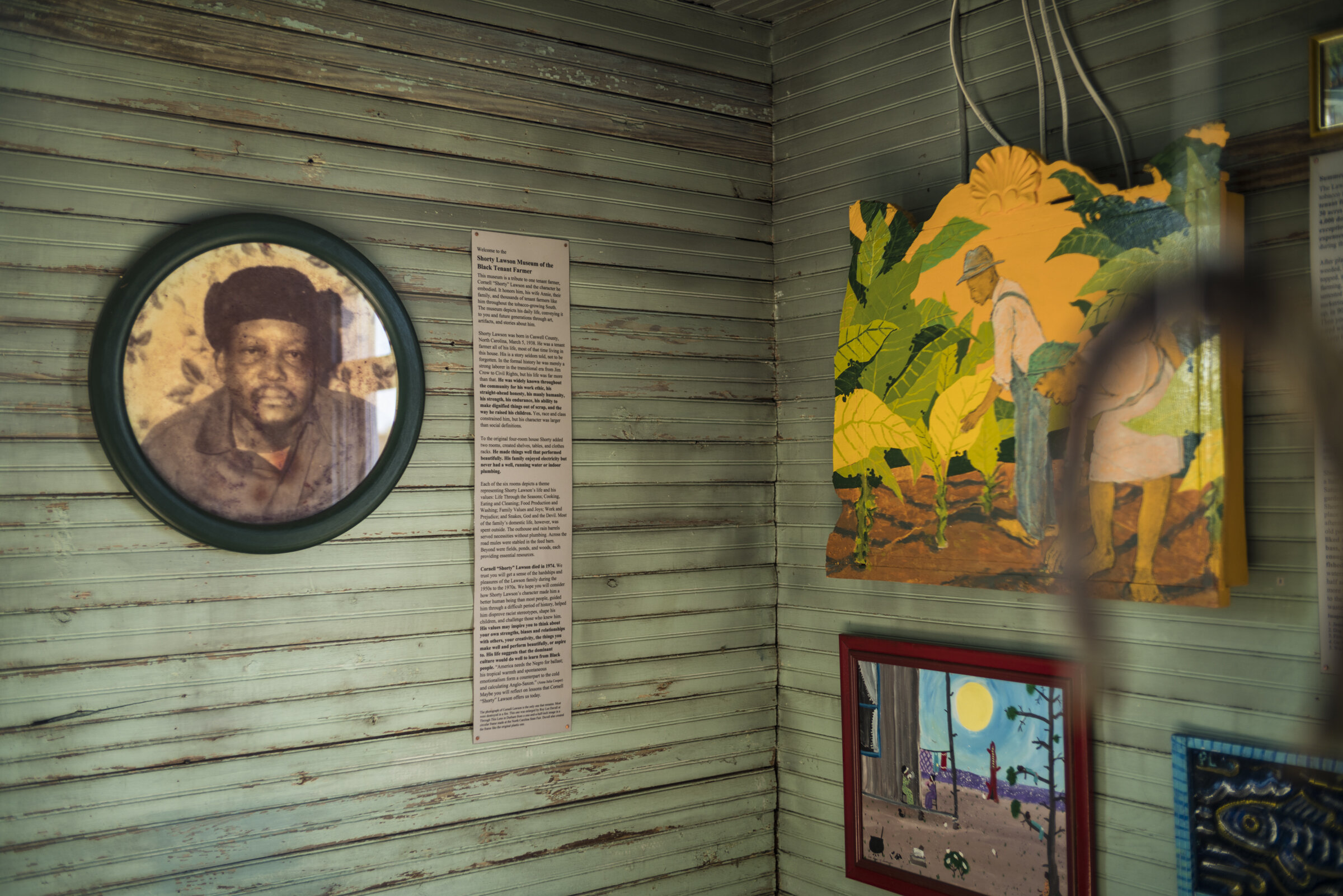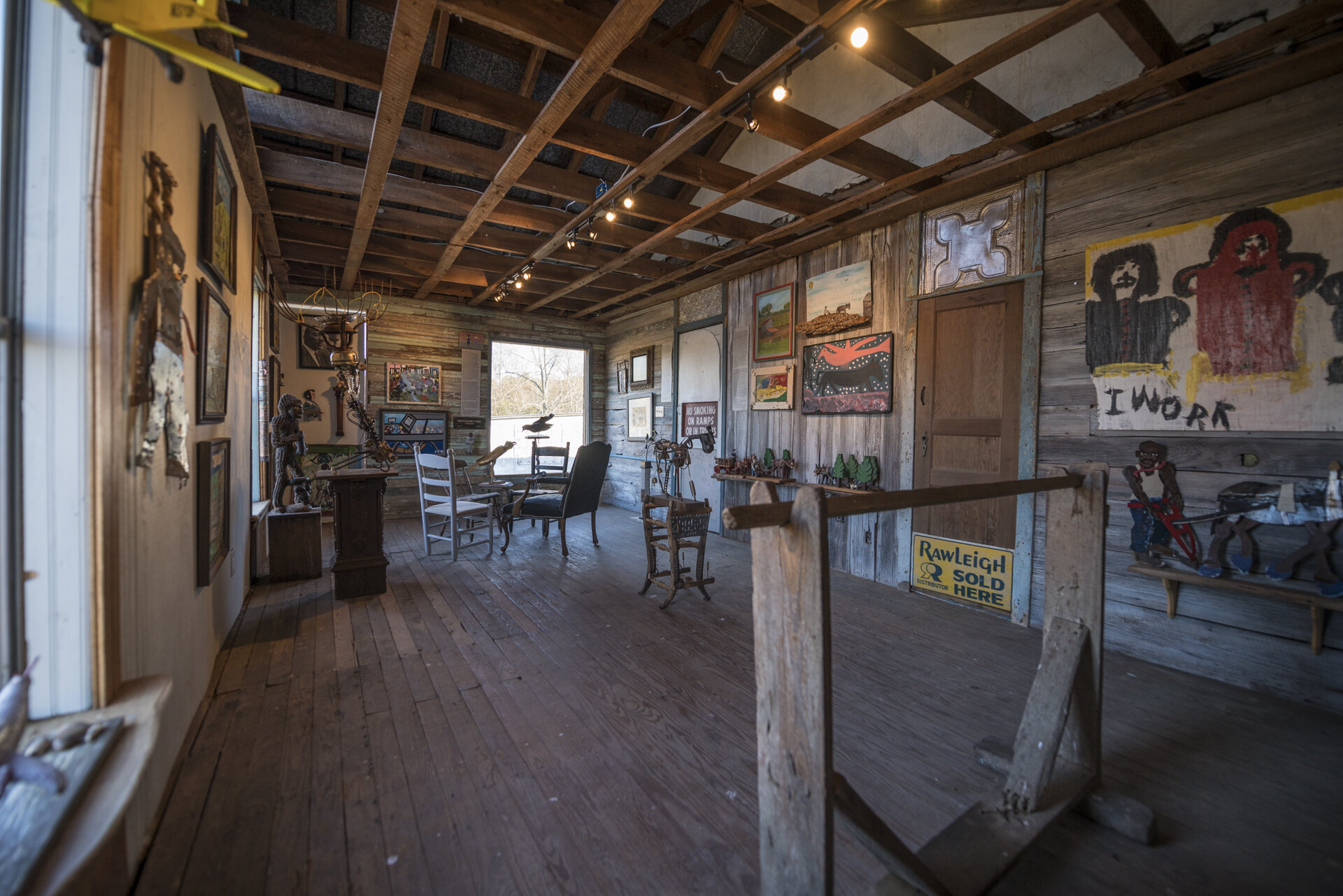
Define It!
“I can go out in the trash dumps and gather what man have throwed away and create something beautiful out of it.” (Charlie Lucas)
From Tenant Farmer to Artist
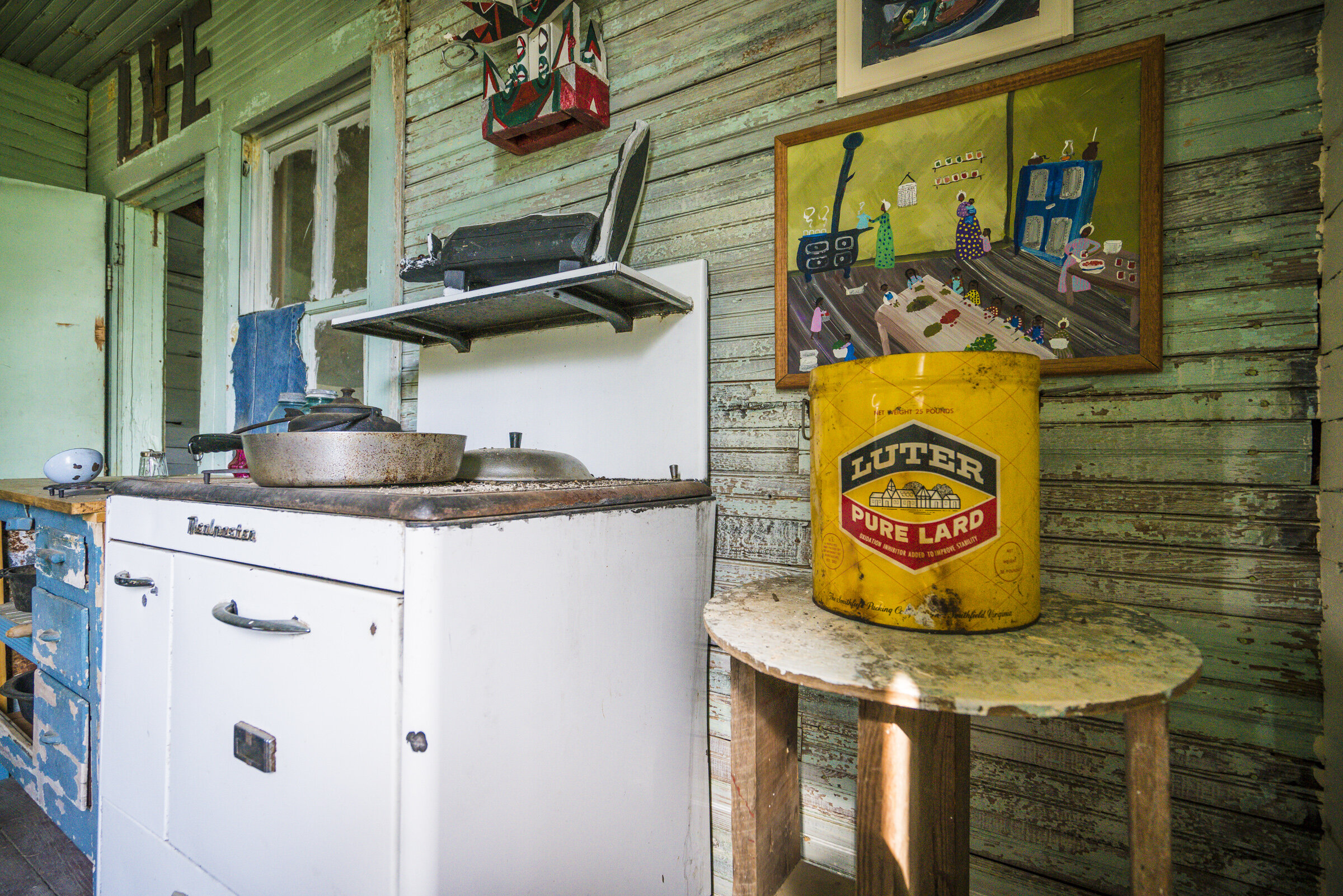
Rather than reconstructing each room with period furnishings, the museum combines oral histories with outsider art, drawings, paintings and yard sculpture done by self-taught artists without formal training. In the South many outsider artists like Mary T. Smith, Mose Tolliver and Black Joe Jackson grew up in Black share cropper families and started making art after some personal tragedy. Many were memory painters who depicted daily events of tenant farming. “I get a lot of my ideas sometime just looking at reality, looking life straight in its face,” as Purvis Young explained. Each artwork, from Hog Killing by Bernice Sims to Milking by Eula Parris, is married to a story, creating an unusual combination of stories and art as one within the rooms domesticated by the Lawsons.
You Were present at the Time
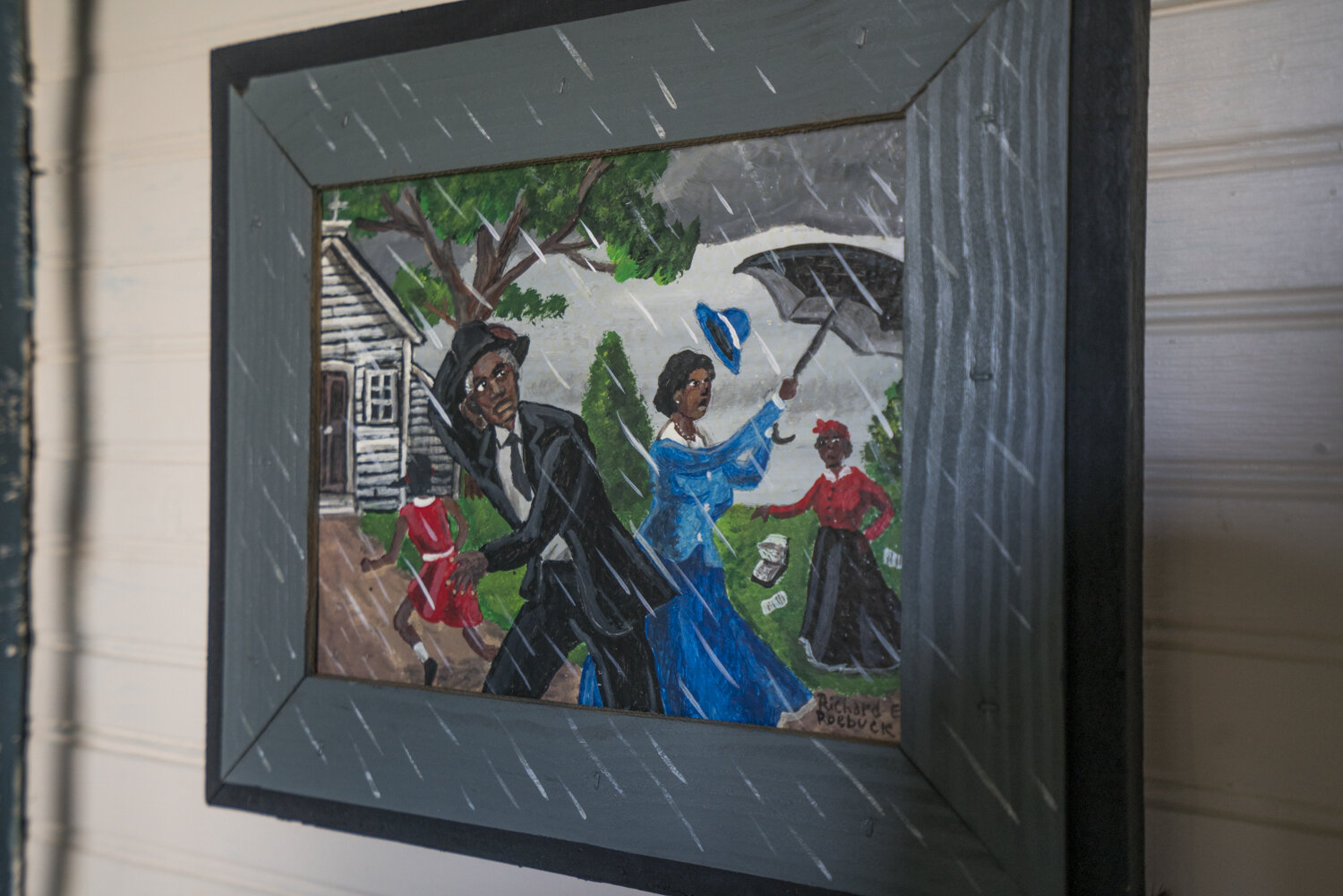
Outsider artists depict all these common events in such vividness that you are convinced you were present at the time. Because Outsider Artists lived firsthand the events they describe, they grasp and convey the full sensory experience and emotion of what they paint. You smell breakfast cooking in Leonard Jones’ Eggs and Bacon or relive the panic of running half a mile and missing the school bus in James Harold Jennings’ Self-Portrait With School Bus. Benny Grinstead carved mules at work that feel more like mules at work than mules at work; you tense at the mule’s tension in Snaking Logs and suffer the utter exhaustion of man and mule in A Pause from Plowing. Jessie LaVon’s depictions of the heat of July, Dog Days of Summer, make you sweat. You fear the full weight of a big bass in the Fish Time by Willie Jinks.
Brutally Honest
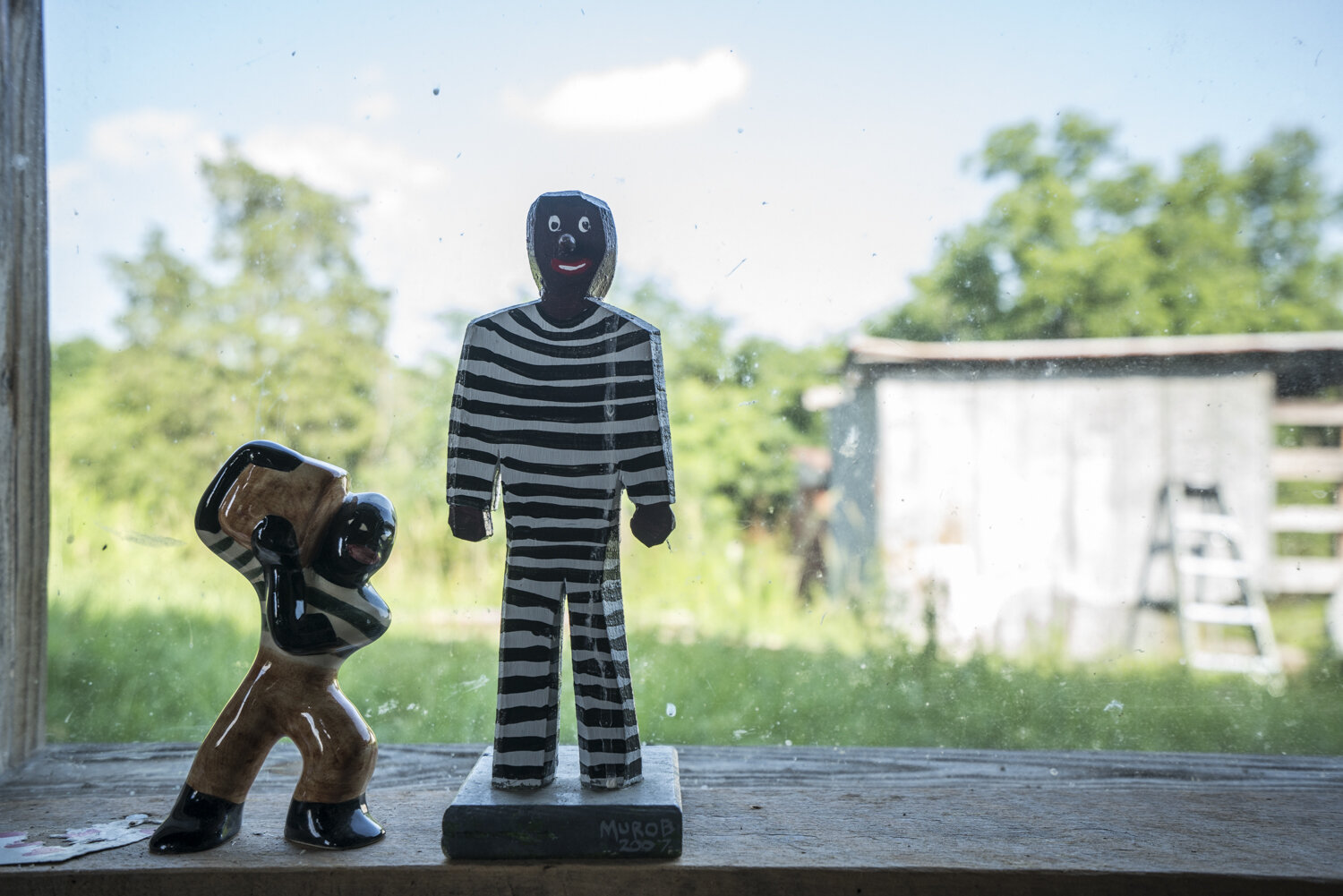
Outsider Art is direct, brutally honest, in your face, without pretense. It is generally more emotionally expressive than high art. Unconstrained by academic conventions, “rules” like perspective and pleasing color combinations are ignored in favor of capturing the heart and soul of an event, an animal or an interaction between people. The eyes of the wife in Richard Roebuck’s I Can’t Cook Until You Get in the Wood, Old Mand cut sharply into a penetrating stare at her husband, capturing the essence of marital fury. Many of the works are figurative expressionism, abstracted only as needed to express inner feelings. Outsiders paint outside the lines, beyond the canvas, frame or delimited space as if extending to some yet-to-be-described realm.
The artists seldom seem to be trying to create a “beautiful” object. In this the art is akin to an unstudied post-modernism aesthetic, an unselfconscious act, a part of life. One might read the Bible and paint or sew a scene from a combination of the Biblical description, the local landscape and imagination. Until recently, the art was utterly original. Most artists worked in the isolation of rural or small towns, knowing nothing of other artists or artistic trends. Almost none expected to “market” the stuff they made. It becomes “making art” only after the artist is discovered and consumed. For some artists the work loses authenticity, mass produced for a commercial audience.
The Black Outsider Art during Jim Crow symbolically expressed oppression and was quietly revolutionary, but became more “vocal” about discrimination during and after the Civil Rights Movement. Some is art of the resistance. In this way it shares much with Negro folk stories, slavery field songs, southern gospel music and blues. In contrast to music the visual art, until recently, was not recognized as an original contribution to American culture.
Optimism

In most of the work there is an undying optimism in spite of unthinkable tragedies. It is not cynical. It is not pessimistic. It is not dark or foreboding. It is not Art Brut which is also considered Outsider Art. There is no self-pity. Life is what it is, good and bad. The art, like tenant farmers themselves, speaks a subtle truth to power but also simply truth about everyday life. It celebrates the mundane aspects of life. These are visual voices that have critical messages about what really matters. Much is about the past, but more is for the present and future.
Art with a Point
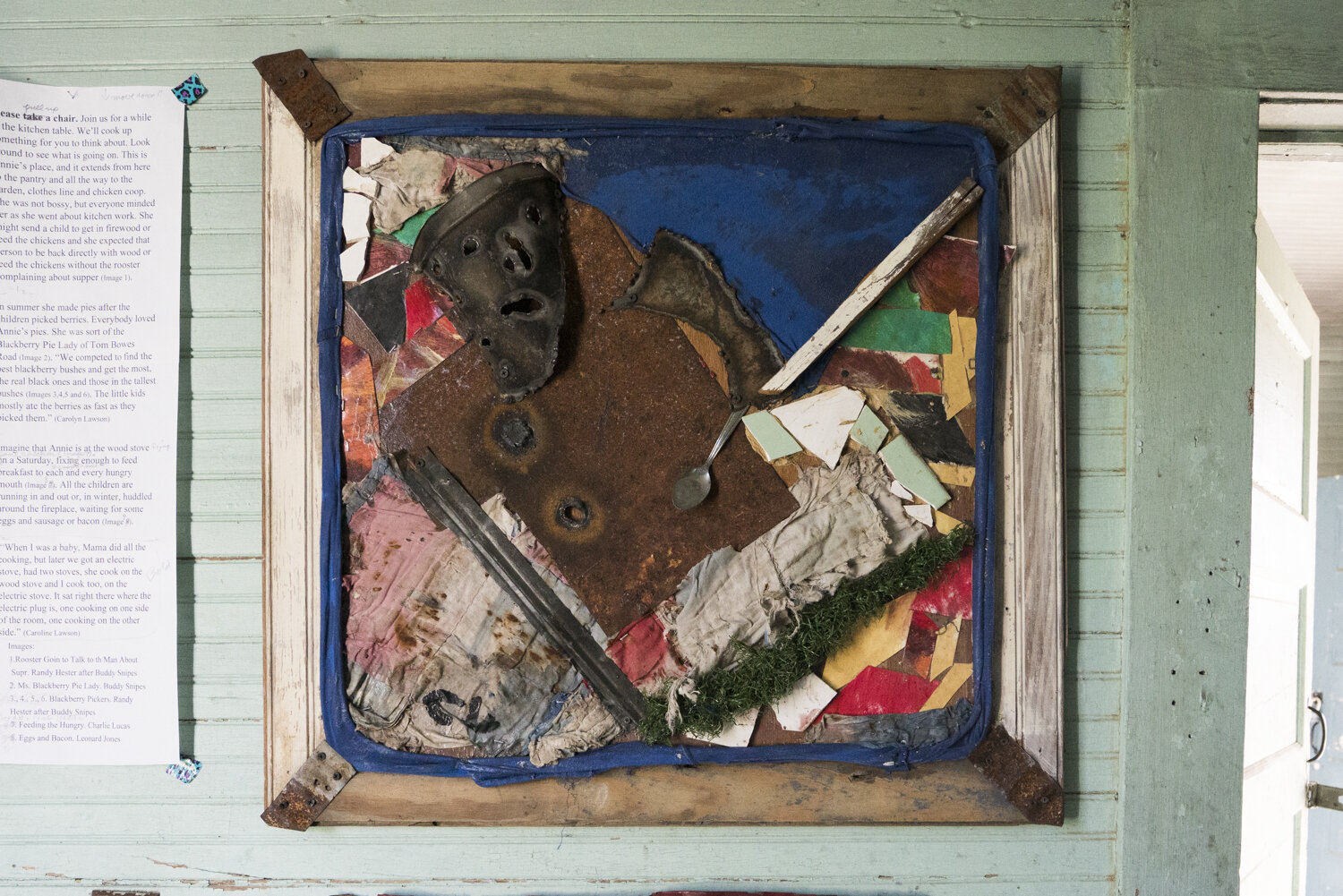
Most of the works in the museum are Outsider Art, but there are other factors in choosing pieces for the museum. The primary criteria is that the art must illustrate the character of Shorty Lawson, illustrate an important story in the life of the Lawson family between 1950 and 1980 or make a point about the racial context of the transition from Jim Crow to the Civil Rights Movement. African-American artists and former tenant farmers were sought out as were artists from North Carolina. Most of the art was made by African-American folk, visionary or outsider artists like Eddie Armstrong, Thornton Dial, Charlie Lucas, Joe Minter, Ruth Robinson, O. L. Samuels, Bernice Sims, Mary T. Smith, Buddy Snipes and Jimmie Lee Sudduth. But some White North Carolina artists captured events particular to the tobacco economy of which Lawson’s family was essential. Interestingly, there are hundreds of depictions of cotton but few of tobacco farming. Works by Benny Carter and Clyde Jones evoke experiences distinctively local. Eula Parris’ paintings show not only harsh everyday life but also how the landscape itself felt. Several works are gifts of Bill Parker, Nate Hester, Charlie Lucas and Joe Minter.
